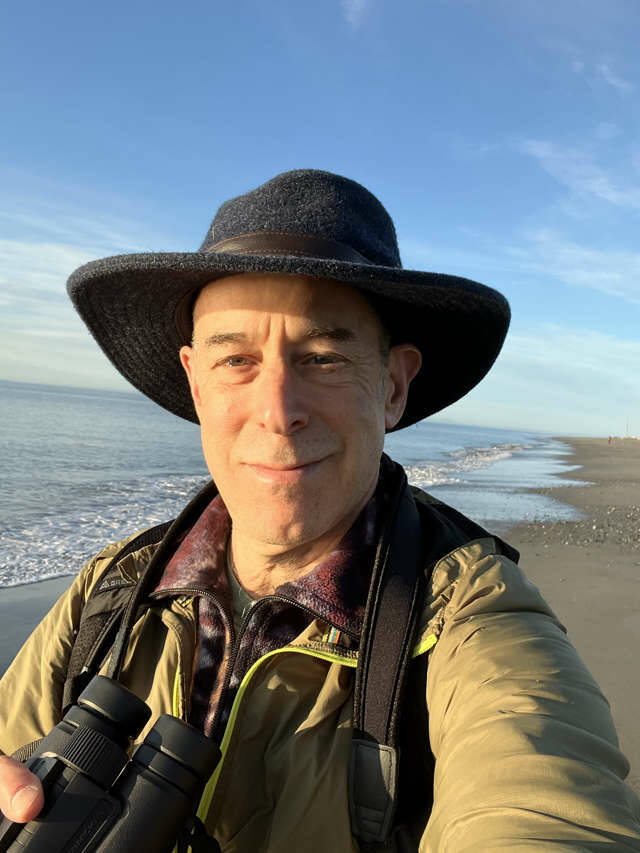When we start the hike at the Lake Angeles trailhead, there’s very little snow. In fact, no snow. We feel vaguely ridiculous about the snowshoes strapped to the back of each pack, but we carry them anyway. Bring your stuff!
As we climb, the air cools. Within a half mile there’s a dusting of snow on the trees, at a mile in, there’s a continuous cover, by two miles we’re in a few inches of fluffy white stuff. At two and half miles, we put on the snowshoes.
By the time we get close to Heather Park, some four and a half miles from the trailhead, even the snowshoes are struggling. With each step we sink into snow above our knees. The next step requires swinging the back snowshoe up out of its personal hole and forward to plop down into still more snow. Powder flies up with each step, like small white fountains.
We’ve entered the Olympic Peninsula’s water tower in the sky. Each winter, winds blowing from the west and south deposit water from the Pacific Ocean onto the peaks of the Olympic range. The heaviest snow falls on the western peaks, with less and less as one moves to the east; interestingly, north facing slopes store a bit more snow than south facing ones, both because the sun evaporates less off the north facing slopes, and because the north slopes catch snow off the prevailing south winds during windy snowstorms.
In the Dungeness River’s watershed, snow usually accumulates from early November through the end of April. Hydrologists measure the amount of snow as “snow water equivalent,” a metric which allows more accurate comparisons than just snow depth, given that fluffy snow can pack down and settle to a smaller depth but still store just as much water. This year, as of April 4th, we’re above average for this time of year by nearly 20%, which is good news for the coming summer.
The six months of snow accumulation is what nourishes our communities all through the summer. In Sequim, the water that we drink, that irrigates local farms, and that keeps the Dungeness River flowing all comes from that snow, even as our typical dry sunny summer kicks in. Up in the mountains, the slowly melting snow nourishes spectacular wildflower displays, and the longer the snow lasts, the longer the blooms extend.
Of course, the snow regime of the Olympics is changing. Since 1980 we’ve lost 35 glaciers and 16 perennial snowfields that used to exist in Olympic National Park, and the area of perennial snow and ice in the Olympic Peninsula is half of what it was in 1900.
Seasonal snow has always been more important than perennial snow in the Dungeness watershed; the bulk of the Olympic Mountain’s glaciers are further west, where heavier winter precipitation allowed the formation of ice that lasts through the summers. But seasonal snow is also down, with snow depths and snow coverage both running about half what they were when measurements began decades ago.
At the moment, there’s enough snow that our water tower in the sky still works. It isn’t always full, but the annual give and take of snow accumulation and melt generally gives us enough.
As time goes on, and both summers and winters continue to warm, we’ll see earlier summer melt and less winter snowfall (i.e. more winter rain in the mountains). For the communities of the Olympic peninsula, that will mean increasing drought stress in the summer, with tough conditions for salmon in the rivers. As snow melts earlier in the mountains, the season of moist alpine meadows will get shorter and shorter, and the wildflower displays will become briefer.
For now, you can check out the annual wildflower extravaganza. Dungeness River Nature Center’s volunteers and staff lead guided wildflower walks every month starting in April, with higher elevation walks available in June and July. Sign up at dungenessrivercenter.org.



